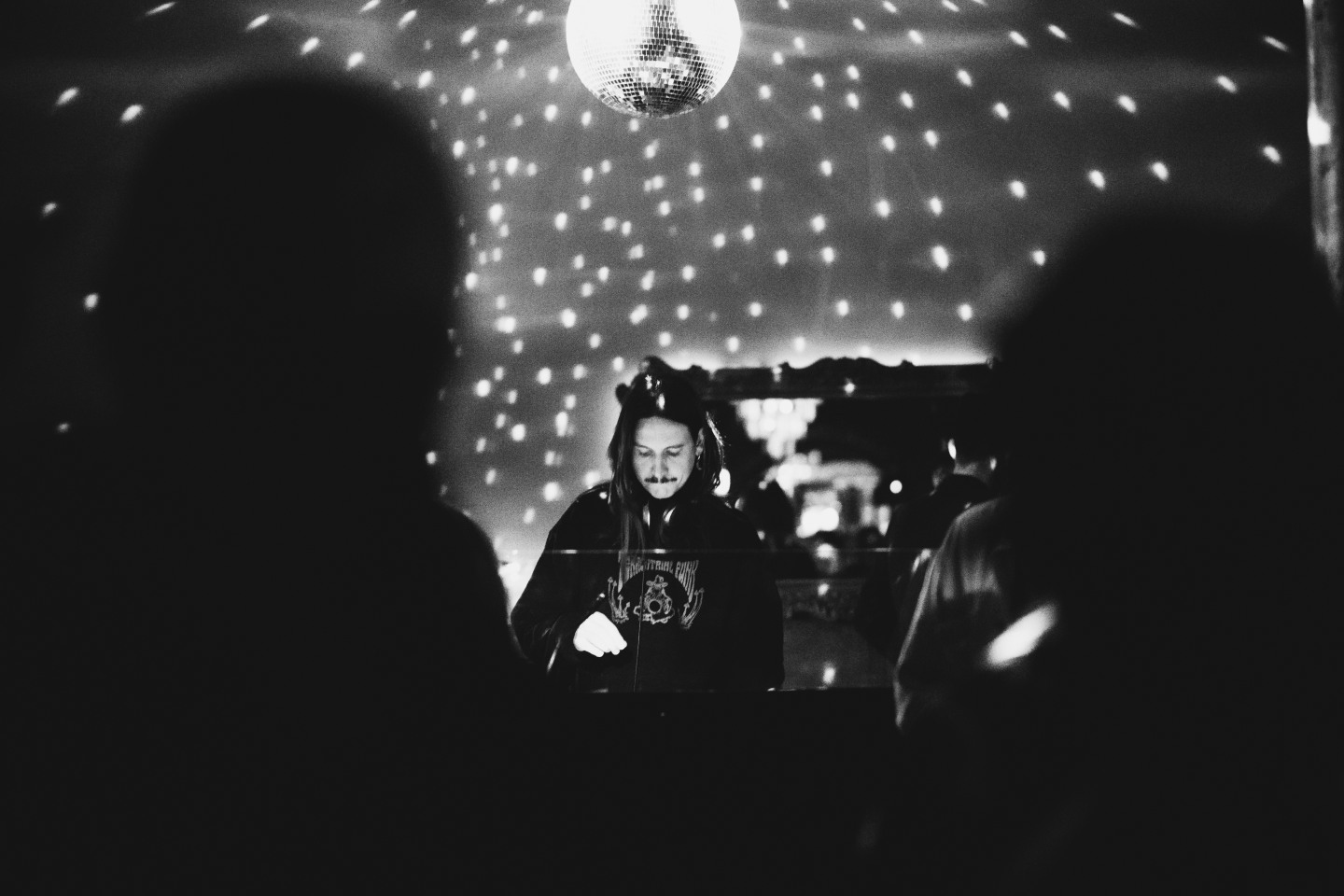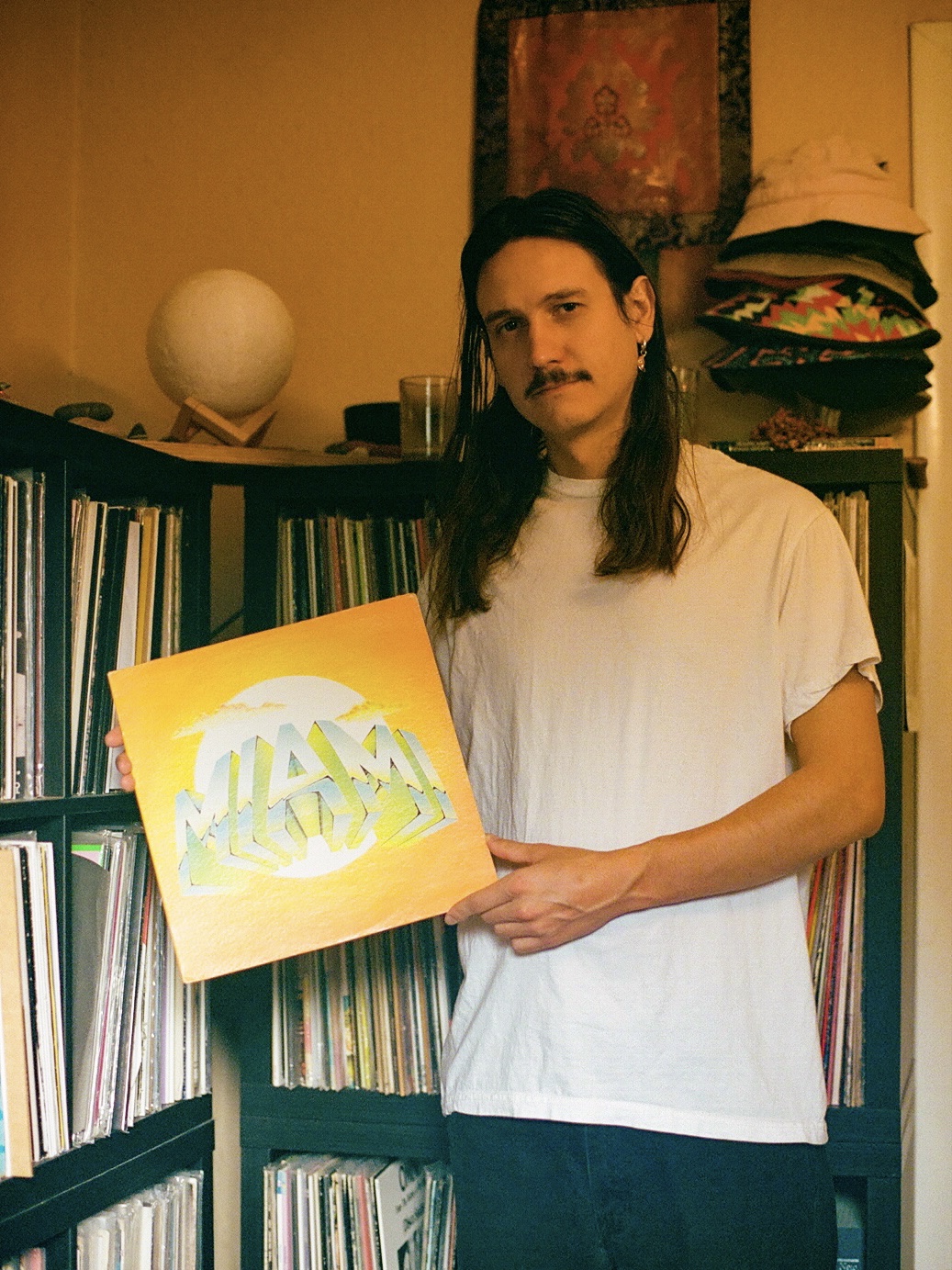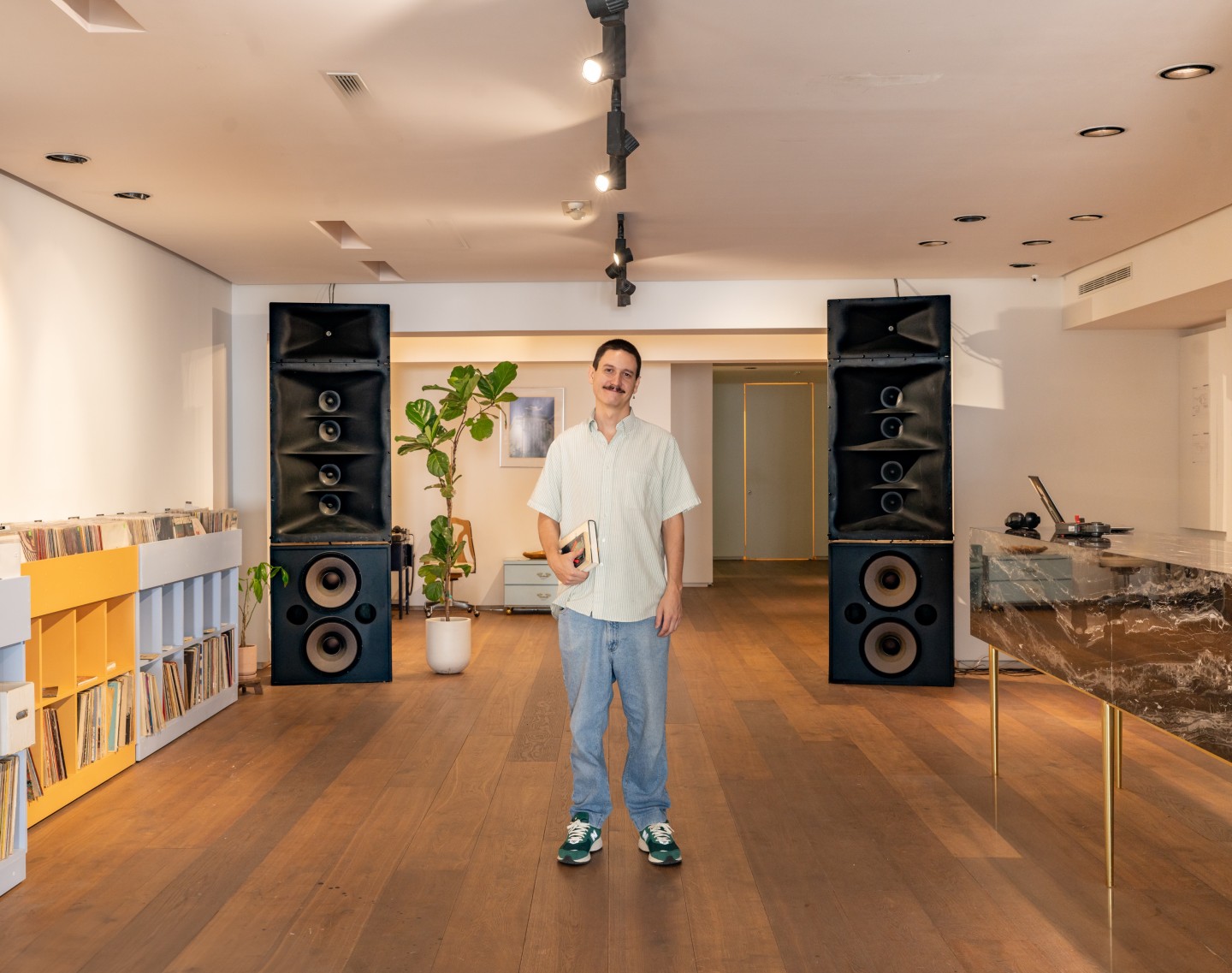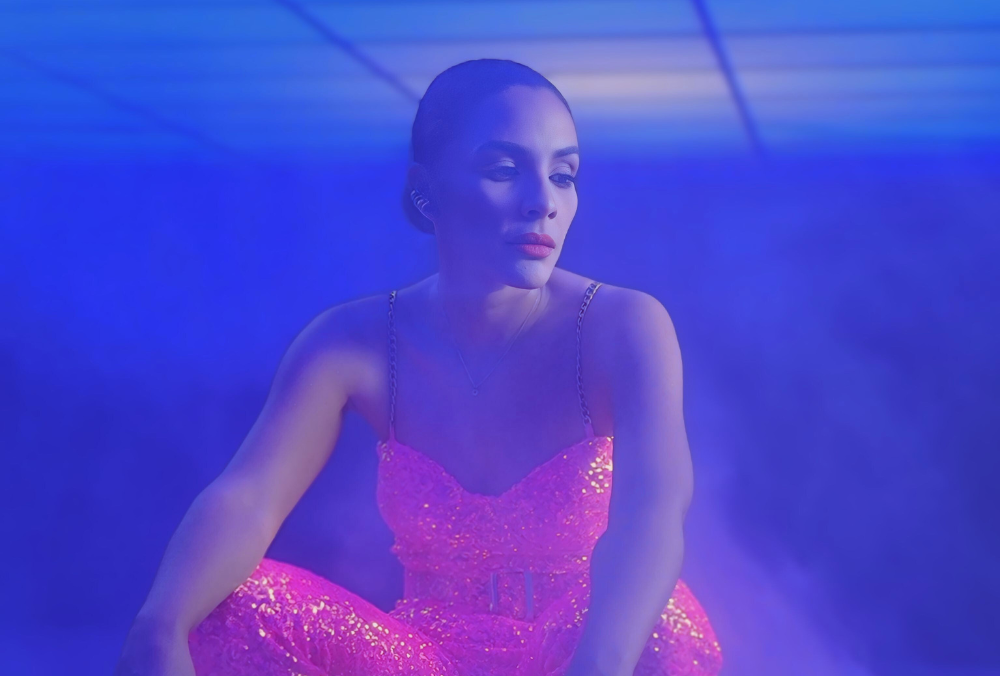Daniel Edenburg has an obsessive streak. The founder and head of Terrestrial Funk – a record label and store in Miami, Florida – he’s been seeking out rare grooves since he started DJing high school parties and realized that he’d live and die by his record collection. He’s since been voted DJ of the Year by the Miami New Times and built an online record store packed with deep cuts, private-press gems, and one-off masterpieces from across the globe. He’s responsible for some of the most fascinating reissues of the past decade, including Lang Cook’s local-legend Miami funk LP She’s Hot With 2,000 Watts; Ghanaian titans Pat Thomas and Ebo Taylor’s self-titled 1984 deep-cut collection; and Silk Road, a compilation of left-field funk and soul from Armenian Diaspora musicians put together with L.A.-based producer and compiler Darone Sassounian. Just this month, the label has released the new album from organic-ambient duo Choral Morphologic and a reissue of System Exclusive’s gorgeous downtempo cut “Summertime,” and Edenburg has been busy opening a Terrestrial Funk pop-up in Miami’s Design District.
I’ve followed Edenburg, who DJs as Brother Dan, on Instagram for a few years; he’s well worth following for snippets of ultra-rare cuts from Brazil, Ethiopia, or Florida, not to mention some incredible album art. But one post in late June seemed particularly deep. Beneath the cover of Amaqabane and Blondie Makhene’s late-Apartheid liberation anthem “Too Many People,” Edenburg wrote that he’d spent the past two years going through a warehouse’s worth of records, almost a thousand pieces of vinyl from the 80s and early 90s, pulled from storage at a Black-run radio station in South Africa. He was only halfway through. “It’s a time-consuming endeavor to clean, record, photograph, and upload these to our YouTube channel and website,” he wrote, but “time well spent when I see so many comments from folks who grew up on this music and have looked for a song for decades.”
After spending hours falling down rabbit holes on the Terrestrial Funk YouTube page, listening to the South African tracks he’d uploaded, and revisiting his joyful mix of South African bubblegum, boogie, and kwaito for the ever-popular YouTube channel My Analog Journal, I called Edenburg at home in Florida to talk about what pulls him towards these under-explored corners of music history, and how Terrestrial Funk’s work remains essential a decade in.

What is it about Miami and about Florida that’s so special musically, and how has that influenced you?
Miami is unique. It’s a city with beautiful people and a long history, going back to indigenous culture. Florida staved off colonization for so long, and that energy is still present here. What’s most special about Florida and Miami is the land. Everyone subtly connects to that, and you have a beautiful working class here — a lot of creatives living life close to the sea and to the Everglades, having mango trees all around them. It’s the tropics.
It’s very politically corrupt, like most places in America. And the city largely exports. There’s a brain drain from Miami to cities like New York because there’s a lack of resources here, a lack of work even outside of the creative domains. People struggle make ends meet, especially since the pandemic. The rising cost of living has made it pretty inaccessible.
But throughout history, oppression is tied to beautiful ways of expressing your struggles. Combine that with Miami’s party culture and it makes for a unique spectrum of everything from boogie to freestyle to electro — you name it. There’s always been a beautiful body of work coming out of the city.

There are clearly ties there to South African music and culture. What led you to music from the late-Apartheid era?
It was just a natural progression from West African stuff. I spend the majority of my time digging for music and trying to discover new stuff. I came across some South African music and within a matter of days, I was neck-deep. I got in touch with people in South Africa who had acquired an old radio station’s music, a massive warehouse of music. I got about 1000 pieces shipped over. It’s been two years, and I’m halfway through archiving it all.
What’s the focus of these records? Is it mostly disco and kwaito?
A good amount of kwaito got pressed, but kwaito as a sound started to grow and progress in the mid-90s. It had its roots in bubblegum and in the sounds of the 80s. In the late 80s, you already had early kwaito productions coming out. In the United States, we had early house and proto-house and these interesting electronic productions. Things were progressing at a similar rate in South Africa. And as apartheid phased out, you also saw the control of those resources — record manufacturing sites, businesses — change as the economy was shifting. Plus, you had CDs and cassettes coming into play more.
The vinyl world was shifting. A lot of vinyl manufacturing shut down. So, you didn’t have as much kwaito pressed to vinyl — that exists more on cassettes and CDs. Some of it is definitely already lost into the ether; it wasn’t ever properly released. But that’s part of the work I’m tapping into. A lot of these records were only produced in promo runs.
Have there been any records that have surprised you as you’ve been going through them?
I’m constantly surprised. What has surprised me so often is just how good a piece of music is. Some of the South African music, especially the kwaito and house music that came out, is just such a perfect combination of elements from the bassline to the subtle chords, combined with the nuance of the South African vocalists. A lot of it blows away some of the best house productions to ever come out of the States. I was working with another artist, Joe Nina, who had a bunch of different projects. I’m reissuing an album of his, Nina Freak, and there’s a song on there that sounds like it’s one of Larry Heard’s greatest songs. That hardly anyone has even heard this is mind-blowing to me. I’m surprised very often by the depth of the sound and how wonderful it makes me feel just hearing it, how fortunate it makes me feel to hear the music. So it also puts a big weight on me to grow the label and to do justice by these artists and not just be another independent vinyl record label moving some copies and getting some copies in DJ’s hands. I want to do as much as I can to grow these artists’ careers and tap them into as large an audience as I can.
You had those Ebo Taylor records, plus the Silk Road album that you did with Daron Sassoonian on the Armenian Diaspora. This music is all linked by a resilience in the face of injustice. Do you find yourself drawn to records that express that resilience?
To progress and achieve the things that we hope to achieve in this world today, we need to understand the work that’s been done. A lot of people feel a sense of hopelessness with where we’re at because they lack an understanding and study of revolutionary history. With music, it’s often overlooked. Anyone can just enjoy a piece of music. You don’t need to think of the political context or dive that deep. You can just enjoy a piece of music for what it is. But because of my political work and study, I focus on those things.
Silk Road is the most representative of that. And that was largely work that Darone had done and that his family has done. The Armenian struggle has been very present. It’s overlooked in our society. There was an ethnic cleansing of Artsakh only a year ago. That was after Silk Road came out, and in the liner notes we’re talking about the Soviet era, post-Genocide, the psychedelic funk and this fantastic music that came out of the region. To talk about that in the present, we need to be aware of what’s been going on there [in the past].
It’s wild how heavy life can be. There’s a release that I’m working on now with a South African artist named Ali Makki. I spoke with Ali, I managed to get in touch with him through his friend Lefty, who produced and worked with a ton of artists in South Africa through the decades. He has one unreleased album that I’ll be putting out on the label. I spoke with Ali. He was so excited. He said he’d been waiting his whole life for this. He had such a deep sense of gratitude, it was such a joyful thing. I teared up with joy having this conversation with him, and I’m filled with gratitude because this is one of the greatest pieces of dance music ever recorded.
A week later I get a WhatsApp message on my phone. It’s Lefty. He tells me that Ali Makki was murdered. I just burst into tears in the club. He was so full of hope and he was such a joyful, kind soul. I’m bringing this up because there’s a political context to this. He was working to protect the people in this town from developers; Ali was working against them and fighting them. Lefty thinks they essentially put a hit on him, that a couple of people came by and shot him dead.
Here’s music that was produced towards the end of the apartheid regime and didn’t really see the light of day or receive the life that it deserved back then. He did have some fantastic releases that came out and he definitely had a really respectable career, but that’s obviously stunted within the frame of apartheid and the ability for that music to be exported. I’ve worked with Lefty and Ali’s family to get this release out. That’s one that I’m really excited to share with the world. But it is telling of the reality of the sub-layers of this music. Unless we’re having these conversations and telling these stories and trying to deepen our understanding around them, I don’t think we really understand or gain as much as we could.
It goes back to the question we started with, about what you wanted Terrestrial Funk to be. What do you want it to be now? Is there a unifying idea behind it?
My desires are rooted in pretty simple things — an emotional connection to the music and a visceral response to the music. My goal ultimately is to do right by my artists and to put their music in as many hands as possible. I’m always trying to grow the label and do my best to put as many copies out into the world and have people hear the music. That’s why I don’t deal with the vinyl format exclusively. I try to do digital distributions on all my releases. As long as we can move the copies and they’re not sitting around, I’m trying to press as many as possible and really expose the world to these people’s music. I think that’s doing right by my artists.




